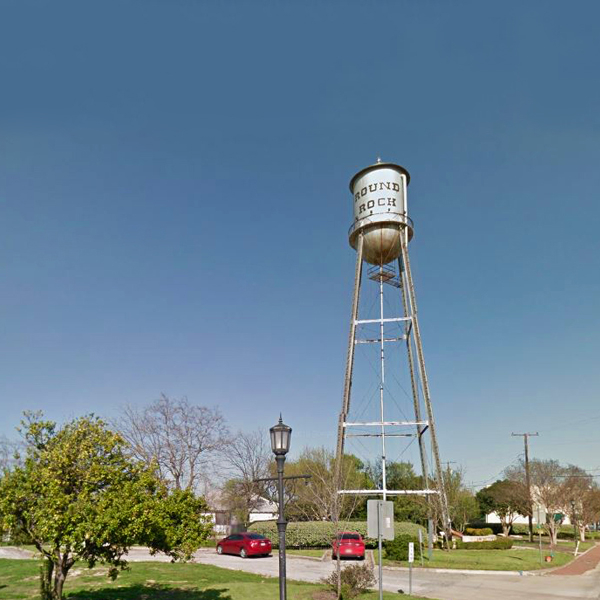
Koughan Memorial Water Tower Park
The park is near downtown Round Rock.
The old water tower is a well-known city landmark.
Built in the 1930s, it was part of a large WPA project.
The project gave many residents water and sewer service.
It also provided jobs during the Great Depression.
The tower is no longer in use but still stands proudly.
Each December, the city decorates it with Christmas lights.
This has become a beloved holiday tradition.
History of Round Rock’s Water System
Early Water Sources
Round Rock was chosen by settlers for its clean, plentiful water.
In 1848, “Clear Water County” was a proposed name for Williamson County.
In 1896, the city drilled its first well, called Town Well.
It was near today’s Mays and Main Streets.
The well often flowed freely, sometimes flooding the streets.
The city capped the well in 1931 to stop flooding.
Before the well, water came from Brushy Creek by wagon.
Modern Water System
In 1935, the Public Works Administration built a new water system.
It included Town Well improvements and a 130-foot water tower.
The tower held 60,000 gallons of water.
Both the well and tower still exist but are not used now.
Challenges and Growth
The city kept using groundwater, drilling more wells downtown.
In 1978, a severe drought caused wells to dry up.
For a time, Round Rock had no water supply.
This led the city to find more reliable water sources.
Surface Water Treatment
In 1981, the city opened its first surface water treatment plant.
It treated 6 million gallons daily from Lake Georgetown.
The city’s population grew quickly in the 1980s and 1990s.
Stricter water rules required plant expansions.
The plant has been expanded four times since opening.
Today, it treats 52 million gallons daily with modern technology.
The facility serves Round Rock’s growing community.



